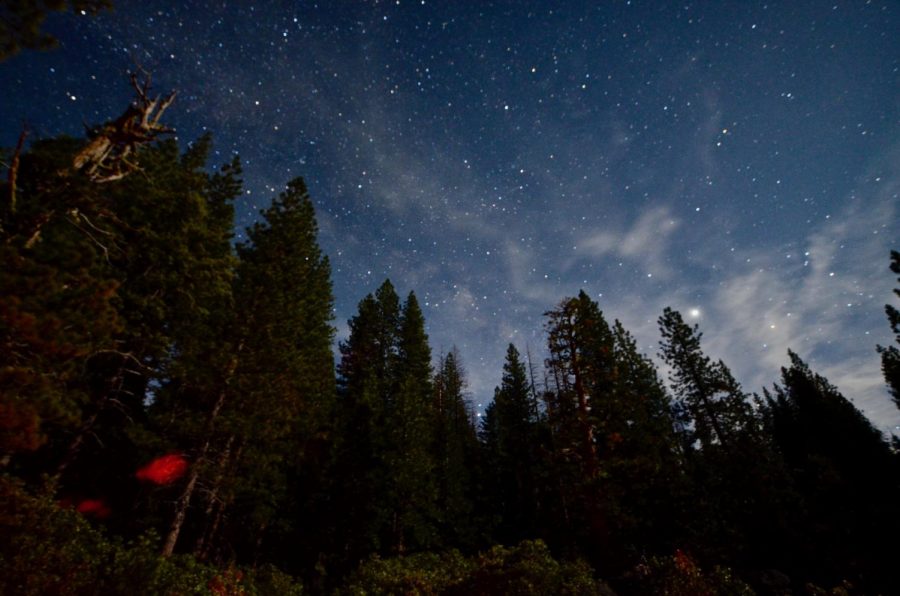Galaxy Hunting: Virtual Star Party for Astronomy Day
This is what stars look like. Some of those little dots are actually galaxies.
The De Anza College Planetarium celebrated Astronomy Day with a Youtube livestream featuring pictures of galaxies to showcase why spring is a great time to go galaxy-hunting.
The YouTube livestream was hosted by the planetarium director Toshi Komatsu and presenter Mike Askins. The event also featured the special guest Alan Gould, the director of UC Berkeley’s planetarium.
“Springtime is a great time to look for galaxies because we’re looking out of the plane of our galaxy,” Komatsu said.
Due to overcast weather, photos of the galaxies were taken a few days before instead of the planned live view.
“I’m jealous of the Hubble Space Telescope,” Gould said. “Because they don’t have to worry about clouds.”
The images were taken with an EV telescope, which gets clearer images the longer it is focused on an object.
They focused on the area of the sky between the constellations Virgo and Leo, which Askins described as “one of the best places to go hunting for galaxies.”
The area is known as “The Realm of the Galaxies,” containing both the Virgo Supercluster and the Coma Supercluster. The Coma Supercluster is named for the constellation Coma Berenices.
“(Coma Berenices) was the hair of a Queen of Egypt,” Komatsu said. “Who sacrificed her hair in exchange for the safe return of her husband.”
The livestream turned to a series of photographs of different types of galaxies for the audience to identify. After each photo, a picture of the same galaxy taken by the Hubble was shown.
Among the galaxies shown were Elliptical Galaxy M87, Great Galaxy M81, and the Butterfly Galaxy Pair.
“When we’re looking at galaxies, these are many millions of light-years away,” said Gould. “That means that we’re looking into the past of the universe. The farther away we’re looking, the farther away in time we’re looking.”
The next De Anza Planetarium livestream will happen on June 18.

La Voz empowers students and the community to examine relevant issues. My goal is that that communication happens in a manner which is clear, effective...



